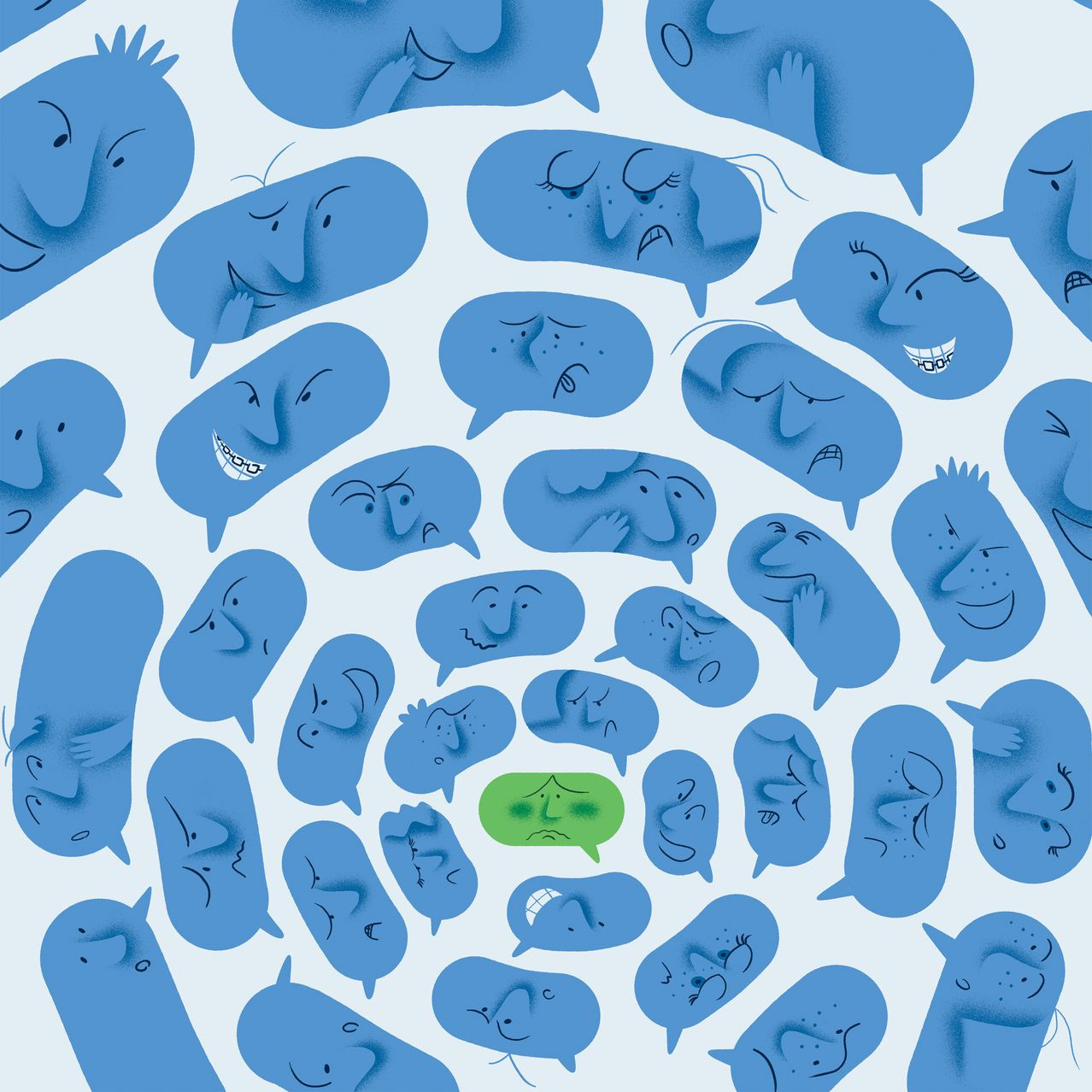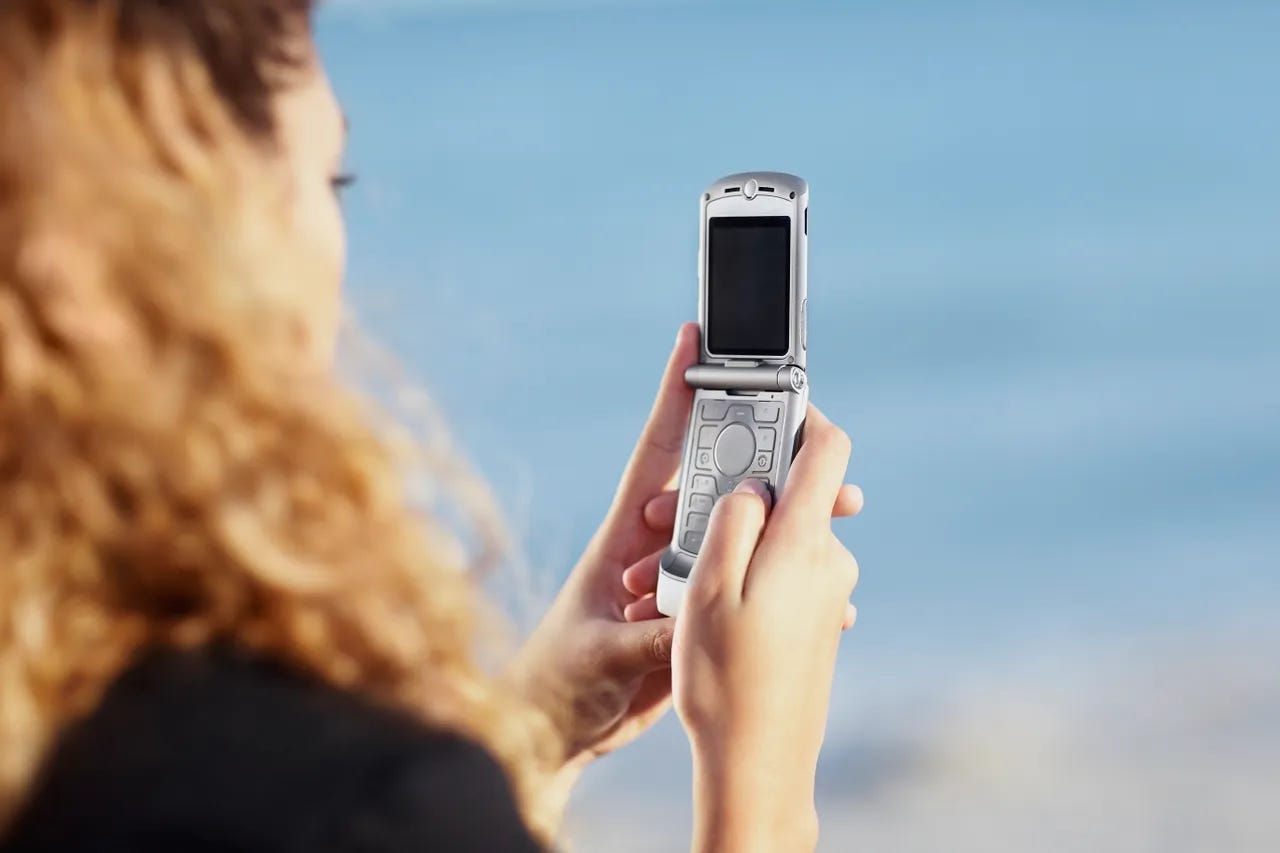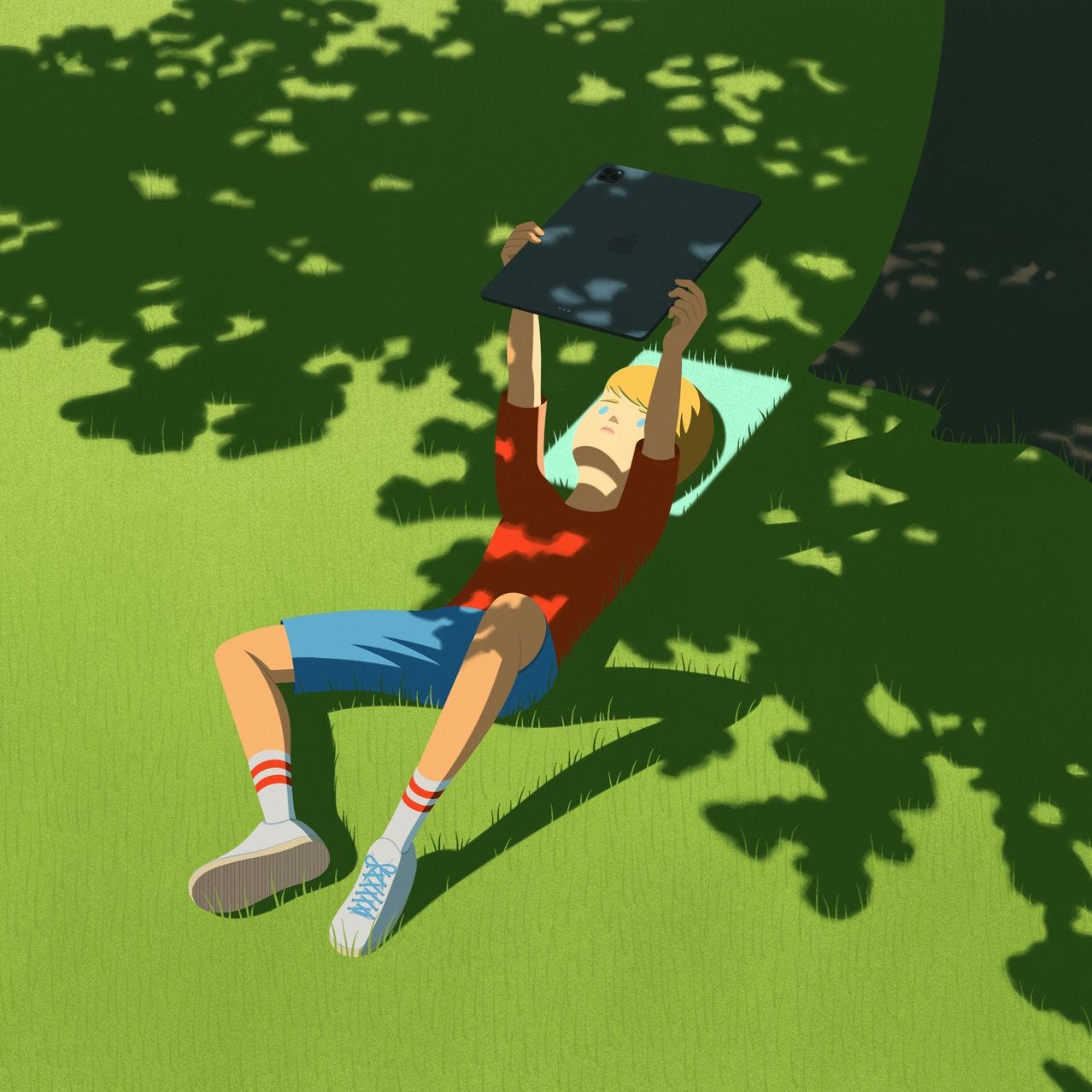Some recent signals on how young people are coping with smartphones as they cross using them over 7 hours a day.
On the one hand reports indicate they’re more enamored with iPhones than Android phones at least in the US. On the other hand, there’s data that at least a subset are reverting to self-help mechanisms against some of the negative impacts of tech. Away from those two cross-trends is a global issue with vision for young and old. All have implications for how folks of all ages will deal with AI products and services, as they roll across these platforms and more (looking at you Apple Vision Pro, at any price). Let’s dig in.
On the first trend, new data is building on a trend the WSJ reported on earlier in the year, that US teens are increasingly preferring Apple iPhones to Android devices. The report cited a Piper Sandler Gen-Z survey of 7,100 teens and found 87% of teens owning on iPhone, with 87% also planning on their next phone being an iPhone.
Also of note, Apple Pay took the top spot among teens in terms of payment apps and services, with 23% of users vs PayPal Venmo at a close 21%, and Google Pay at a distant tenth place with 2% penetration.
This underlines one of the core points I made in an earlier piece that Apple is well on its way to being the ‘Everything App’ in the US vs Tencent’s WeChat dominance in that category in China. And of course against the aspirations of everyone else from Uber to Elon Musk with X/Twitter and xAI.
The iPhone vs Android issue is of course driven by the popularity of Apple’s Messages ‘Blue Bubble’ App vs other messaging apps that show up as ‘green bubbles’ on non-iPhones. As the WSJ anecdotally explains the social incarceration, supplemented with data:
“You’re telling me in 2023, you still have a ’Droid?” says 20-year-old online creator Abdoul Chamberlain during a video posted in April. “You gotta be at least 50 years old.” The video goes on to say that only parents have Androids, and despite the persistent claims from Android users that features like the cameras or battery life are better on the Android than the iPhone, Chamberlain refuses to get one.”
“Other videos more somberly describe the experience of showing up to high school with an Android phone and being called “broke” or “medieval” by the poster’s peers. Still more describe the feeling of being the lone Android user in a group chat of iPhone owners, shamed by texts which, when rendered in Apple’s proprietary iMessage platform, appear in a revelatory bright green rather than the cool blue of messages sent between Apple devices.”
“Apple holds 57% of the phones market versus Android’s 42% in the U.S., according to web traffic analysis site Statcounter. The data skews worse for Android when narrowed down to teenagers.”
So a worry point for Google certainly, and perhaps for Meta and others.
Of even more concern perhaps even for Apple, is this other budding trend of younger folks on eschewing smartphones for simpler ‘flip phones’, also earlier this year by ZDNet, in a piece titled “Gen Z embraces dumb flip phones, a smarter life hack than you’d think”:
“On average, the generational cohort born in and after 1996, dubbed "Gen Z," watches of 7.2 hours of video on their screens per day. With content constantly available, many Gen Zers find themselves "doomscrolling" on TikTok and Instagram.”
“Smartphones and social media have become ubiquitous, and algorithms condition young people to stay glued to their phones. Strategically curated feeds coupled with doomscrolling can be detrimental to mental health, not to mention a major time sucker.”
But they do point out that smartphones are popular among the younger set at large:
“Although Gen Zers have taken to embracing the flip phone as a quick fix to cut back on screen time, smartphones still dominate the market.”
The more recent data does point this trend towards flip phones continuing. Again, as ZDNet updates:
“According to analyst firm Counterpoint Research: The market of feature phones can best be described as retro handsets; think old-school flip and slider phones. By nature, the limited functionality means that feature phones are cheaper than the standard iPhone or Android device, with prepaid options going for as low as $20 and unlocked options just scratching the $100 mark.”
It’s at small numbers, but the trend is notable nevertheless.
A broader issue of note related to smartphones globally, is “Screens, Lack of Sun are Causing an Epidemic of Myopia, or nearsightedness”, as reported by the WSJ:
“Kids aren’t spending enough time outside. It’s fueling an epidemic of nearsightedness.”
“Nearsightedness develops in childhood, typically between ages 5 and 16, and it’s closely linked to a lack of exposure to sunlight. Eye doctors say more kids are developing the condition and at earlier ages. Half the global population is expected to be nearsighted by 2050, up from 30% now, according to the World Health Organization.”
First sighted in Asia in countries like Taiwan and South Korea, the issue has now been reliably diagnosed as a global trend, something of worry for us all, young and old. We all likely need to spend more time outside, and a little more time away from screens close up.
So the solutions are life habit changes, that take time and discipline. Just like getting used to message bubbles beyond Apple Blue. And addictive AI driven algorithmic feeds of ever-scrolling videos and other rivers of entertainment. We will all need coping mechanisms to consume in moderation and balance, as we daily go through the Looking Glass. Stay tuned.
(NOTE: The discussions here are for information purposes only, and not meant as investment advice at any time. Thanks for joining us here)








thank you, appreciate the coverage!